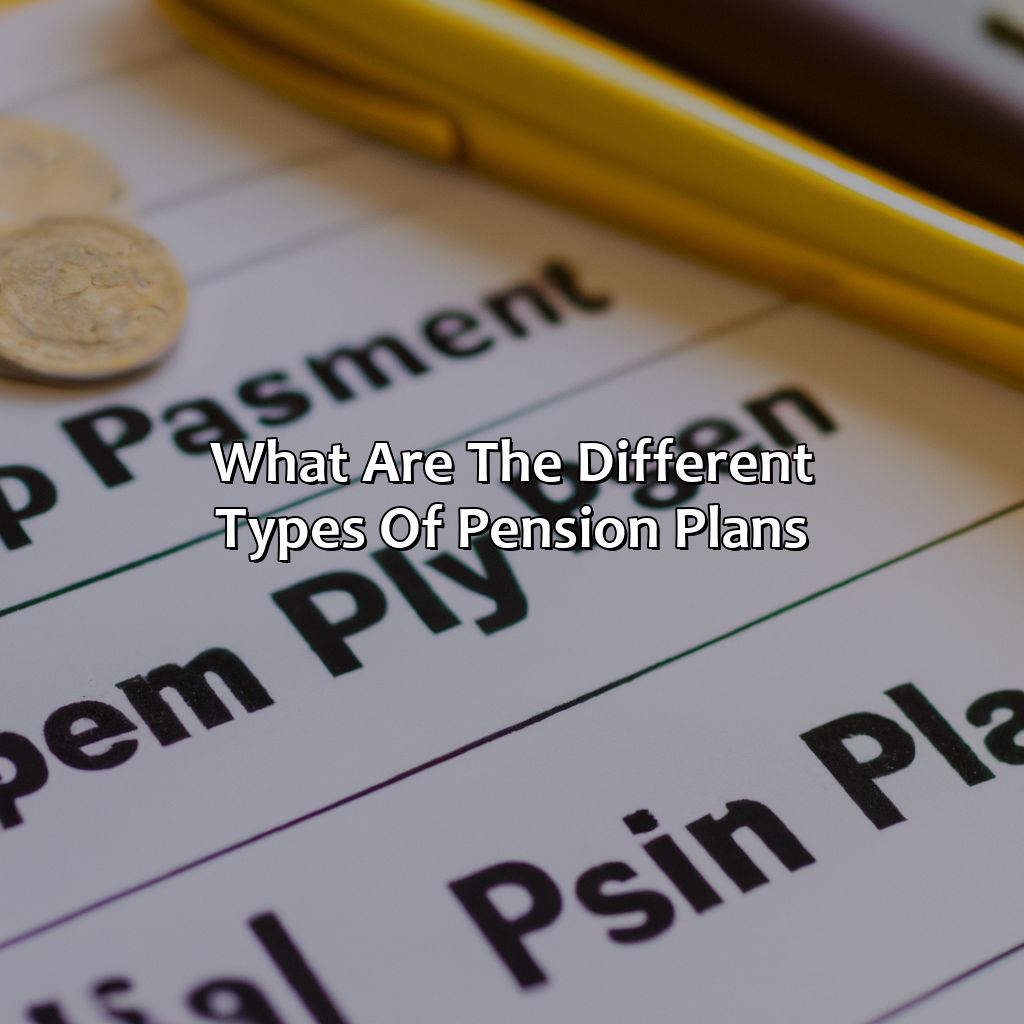What Are The Different Types Of Pension Plans?
Key Takeaways:
- There are two main types of pension plans: defined benefit and defined contribution. Defined benefit plans provide a specific benefit to retirees based on a formula that considers factors such as salary and years of service, while defined contribution plans allow employees to contribute a set amount and invest the funds to build their retirement savings.
- Defined benefit plans typically have benefit calculation methods, vesting periods, and funding requirements that are determined by the plan sponsor. These plans provide more certainty in retirement income but also expose employers to funding risks and may limit employee portability.
- Defined contribution plans offer more flexibility and control for employees, with contribution limits, investment options, and portability features. However, retirees may face more uncertainty in retirement income and employers may shift more risk onto employees.
Are you planning for your retirement? Pension plans can be a great way to secure your financial future. You can choose from a variety of plans based on your needs and goals. In this blog, we will explore the different types of pension plans available.
Definition of Pension Plan
Pension plans are retirement income plans set up by employers or the government. These plans aim to provide employees with a regular income after they retire from work. Pension plans come in different types, each with their unique features, benefits, and drawbacks.
Defined Benefit Pension Plans guarantee the retirees a fixed monthly benefit based on their salary and years of service. Defined Contribution Pension Plans require both employer and employee contributions, investing funds in various investment vehicles to increase its value over time.
There are also Hybrid Pension Plans that combine features of both defined benefit and defined contribution pension plan types. These plans may offer guaranteed benefits along with investment returns.
It is essential to select a pension plan based on your financial goals, risk tolerance, and retirement objectives because these factors dictate the kind of plan you should choose.
It is crucial to secure your retirement by choosing a robust pension plan as soon as possible because the earlier you begin contributing, the more significant your retirement savings will grow over time. You might want to read about which of the following IRAs provides a pension for employees to help you decide which type of plan is right for you.
Get ready to choose your retirement plan like you’re on a game show: will it be the Defined Benefit, the Defined Contribution, or the thrilling Hybrid Option?
Types of Pension Plans
Gaining a better understanding of pension plans requires a closer look. Two types stand out: the Defined Benefit Pension Plan and the Defined Contribution Pension Plan. The former guarantees a fixed payout. The latter? Fluctuating payments based on contributions and investment returns.
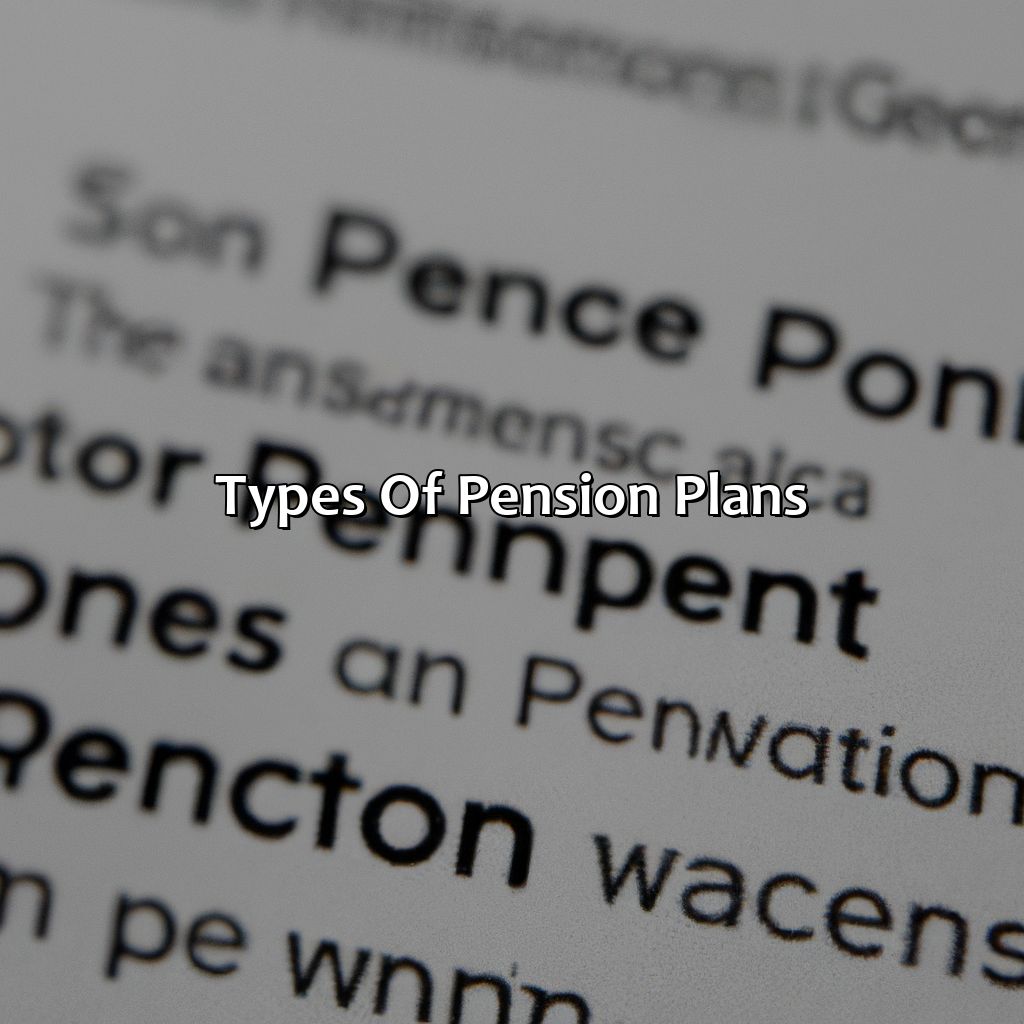
Image credits: retiregenz.com by Yuval Duncun
Defined Benefit Pension Plan
A Defined Benefit Retirement Plan pays out a fixed amount of money to an employee upon retirement based on factors including salary and length of service. The employer takes on the responsibility of funding the plan to ensure it can meet future obligations without input from the employee. Employers often purchase annuities to help manage financial risks associated with defined benefit plans.
The features of a Defined Benefit Pension Plan make it more attractive than other types of pension plans for workers who prefer a set income in retirement. Employees don’t have to worry about market fluctuations, investment risk, or timing their retirement investments correctly. If you’re wondering how to find your pension information, this guide may be helpful. Unlike other pension plans, benefits are guaranteed by the employer and may continue for life.
If a retiree lives longer than expected, they will not run out of money since payment is guaranteed regardless of how long they live. In contrast, if a retiree dies prematurely, beneficiaries receive less money since no funds are left over after death. This type of pension plan requires significant administration from employers to regularly assess funding levels based on changing variables like population demographics and interest rates.
According to the Social Security Administration, in 2018, only 22% of employed people participated in a defined benefit plan as compared to 42% in 1990.
Saving for retirement is like playing the lottery, except there’s no jackpot and the only prize is not having to eat cat food in old age – welcome to the Defined Contribution Pension Plan.
Defined Contribution Pension Plan
This type of pension plan is based on the contributions that are made toward an employee’s retirement fund. The amount of money contributed over time will ultimately determine the amount of benefits received upon retirement. The employer often sets up a defined contribution plan and may match employee contributions up to a certain percentage or limit.
The contributions are typically invested in stocks, bonds, mutual funds, or other investments selected by the employee. The value of the retirement account can fluctuate depending on market conditions and investment performance. Once employees retire, they can use the accumulated funds to purchase an annuity or make withdrawals.
One advantage of this type of plan is that employees have more control over their retirement savings and can make investment decisions based on their risk tolerance and financial goals. However, it also places more responsibility on the individual to manage their retirement funds effectively.
Keep in mind that there are other types of pension plans available, such as defined benefit plans and cash balance plans. It’s important for employees to understand the different options available to them and choose a plan that aligns with their financial needs and goals.
To maximize benefits from a defined contribution pension plan:
- Consider contributing at least enough to receive the employer match
- Regularly review and adjust investment selections based on age and risk tolerance
- Consult with a financial advisor if needed
Don’t worry about retirement, with a defined benefit pension plan you’ll have your own personal ATM machine… that is, if you’re lucky enough to have one.
Features of Defined Benefit Pension Plans
To grasp the features of defined benefit pension plans, explore their: benefit calculation methods, vesting periods, and funding requirements.
Get valuable insights. How are pension plans calculated? How long do you need to work to become vested? What funding requirements must be met?
If you are wondering about what the UK state pension is, you can find more information on our website.
Dig deeper to find out!
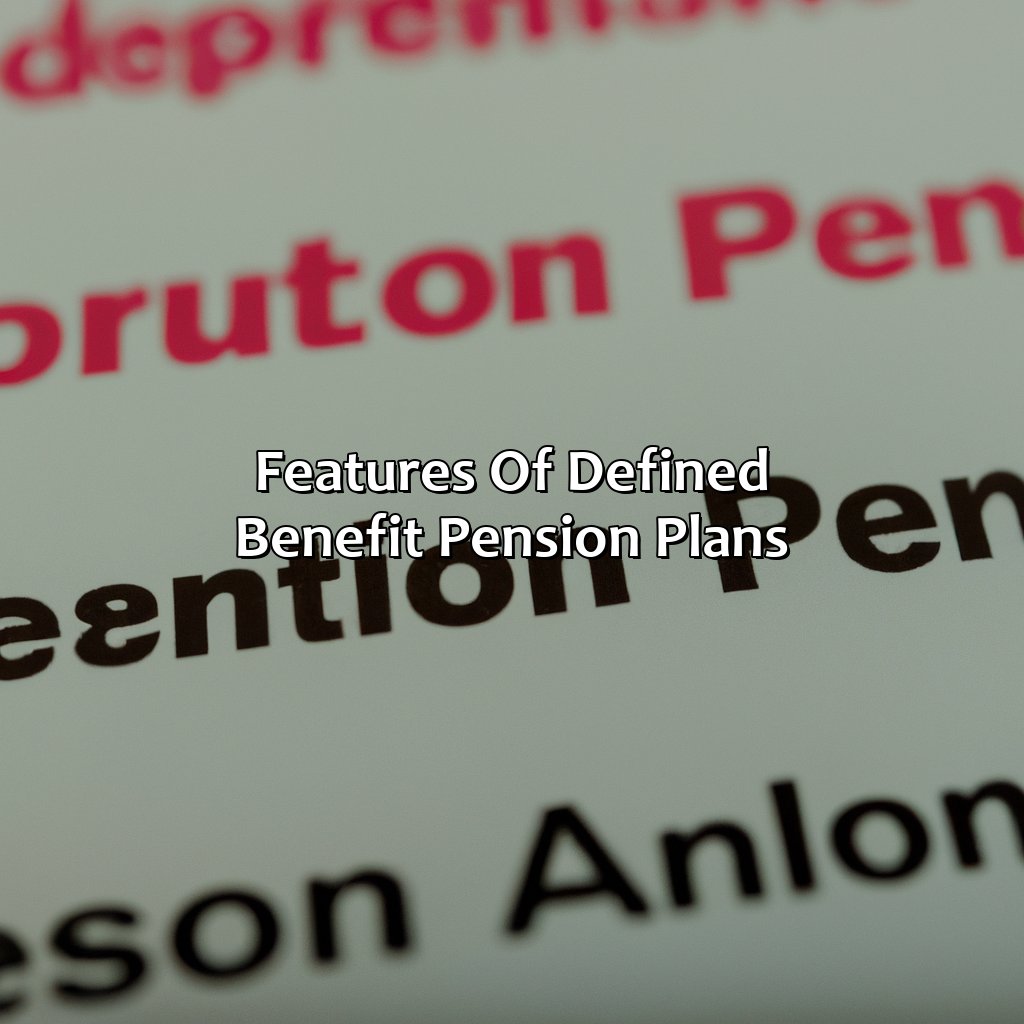
Image credits: retiregenz.com by David Jones
Benefit calculation methods
Benefit calculation techniques entail various mechanisms for establishing the payouts in defined benefit pension systems. Below are some standard methods used by pension funds to calculate benefits:
- Career average – This technique divides the total career earnings by the years of service.
- Final pay method – It takes an employee’s final compensation as the basis for defining their pension payout.
- Cash balance – The Cash balance approach links a defined benefit plan with a hypothetical personal account, providing a fixed cash amount upon retirement.
These methods may vary marginally between different pension plans, but they help determine how much money employees get on retirement using one of these formulae.
Defined benefit pension schemes offer benefits different from defined contribution plans. Participant-specific factors such as age and gender are relevant in determining final payouts while investing is the dominant element of defined contribution plans. Some employers also have hybrid schemes that combine features of both systems.
Pro Tip: Be sure to understand which type of plan you’re dealing with when calculating your potential monthly payments. If you’re not sure what a vesting period is, just imagine it as the waiting room before you can finally cash in on your retirement.
Vesting periods
The period before an employee becomes entitled to receive their defined benefit pension is known as the eligibility period. This time frame may include vesting periods where an employee must meet certain requirements before becoming vested in the plan.
Vesting periods differ based on the rules of the specific defined benefit plan. Common vesting periods include cliff vesting, which requires a certain number of years before an employee becomes fully vested, and graded vesting, which gradually increases the amount of vested benefits over a set number of years.
It’s important to note that if an employee leaves a job before becoming fully vested, they may lose all or some of their accrued benefits. Additionally, companies may have restrictions on when employees are allowed to withdraw their vested benefits. For more information on superannuation pension schemes and different types of pension plans, visit our website.
Defined benefit pension plans have evolved over time due to changing economic factors and legislation. The Pension Protection Act of 2006 required companies to adopt new funding requirements and established new rules for protecting employees’ pensions in case a company goes bankrupt.
Saving for retirement is like trying to catch a unicorn – it’s expensive, elusive, and requires a lot of planning. Especially when it comes to funding defined benefit pension plans.
Funding requirements
Funding regulations are crucial for the operational success of Defined Benefit Pension Plans. Adequate funding levels must be maintained to provide sustainable benefits for plan participants. The necessary fund requirements may vary based on factors such as plan design, funding methodology, and investment performance.
To meet funding requirements, pension plans use different methods. Some plans rely solely on employer contributions while others use a combination of employee and employer contributions to increase the available funds. In addition, pension plans heavily invest in various assets diversifies to protect against market volatility. If you are curious about what percentage of the stock market is owned by pension funds, you can check it out.
It is important to note that underfunding can cause negative long term implications for both employees and employers involved in the pension plan. Therefore, accurate evaluation of funding commitments should be made annually by the relevant regulatory authorities.
Insufficient fund requirements contributed considerably to bankruptcy in Detroit during 2013, which led to municipal debt restructuring with significant tax hikes and cuts in healthcare spending to compensate for lost public pensions.
Hey, at least with defined contribution pension plans, you’ll never have to worry about your employer abruptly changing their mind about their contribution level.
Features of Defined Contribution Pension Plans
Think about defined contribution pension plans. They offer flexibility and control to you. Contribution limits, investment options and portability of your pension pot are all worth considering. Discover how these plans can be solutions. You can choose your preferred investment route. Get to know more about the features of these plans.
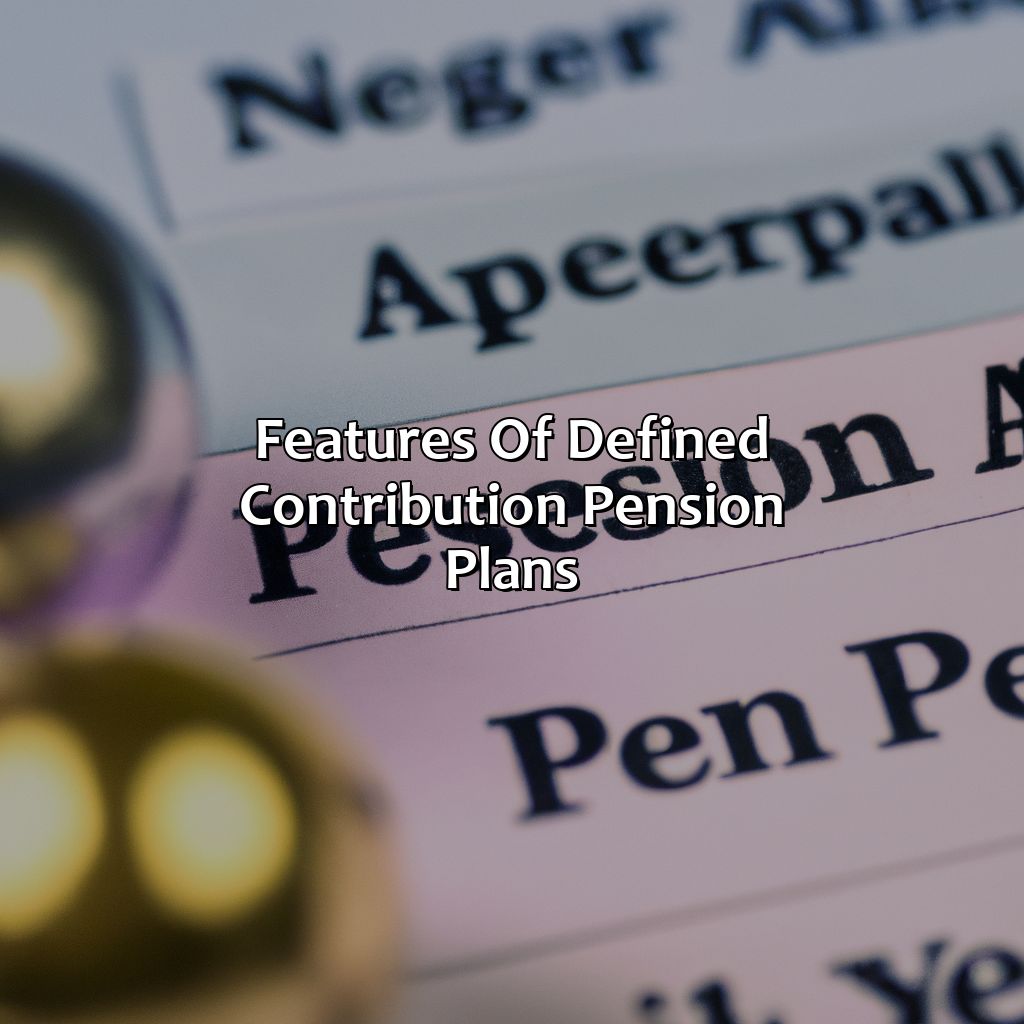
Image credits: retiregenz.com by David Washington
Contribution limits
Contribution ceilings in Defined Contribution Pension Plans!
Defined contribution plans have certain limits on the amount that can be contributed annually. Here are some noteworthy points of these limits:
- Annual additions made to an account can’t exceed the lesser amount of 100% of the employee’s compensation or $58,000 for individuals under age 50 and $64,500 for those above 50 years.
- Elective deferrals by a worker that exceed the limit set by IRS guidelines are regarded as additional income in the year deferred.
- A mandatory portion of these plans requires employers to contribute a specific percentage of each participant’s compensation.
- Voluntary contributions may be capped at up to 25% of an individual’s gross salary per pay cycle.
- The maximum employee annual contribution is updated annually and adjusted for inflation accordingly!
Notably, several factors like a participant’s age, compensation level, and years of service affect contribution ceilings in defined contribution pension schemes.
According to Pensions & Investments, “As per recent studies, approximately 64% of people aged between 35-49 years enrolled in their employer-sponsored defined-contribution plan.”
To learn more about different types of pension plans, you can check out what is Caat Pension Plan on our website.
If you’re looking for investment options in your defined contribution pension plan, just remember: diversify like your retirement depends on it, because it does.
Investment options
Various investment opportunities are available for individuals with Defined Contribution Pension Plans. These include diversified portfolios in a mix of stocks, bonds and securities that combine the benefits of market knowledge and individual talent. One may service these plans by making regular contributions to the plan or investing lump sums annually, with minimum administration fees and charges, including tax exemptions.
The Allocation of Assets in pension Funds is an imperative concern. The primary risk when investing in a plan such as this includes market changes and fluctuations. While options for investments are plenty, holding them lowers exposure to risk while yielding respectable returns for most investors.
Distinctive pension plans present different features offering Notable Benefits to the policyholders concerning factors such as accessibility and control of investments, their time horizon, tax regimes, and educational qualifications. With careful attention to the diversification of portfolio holdings, it could be possible not only to reduce potential losses but also to generate notable returns.
As John invested heavily over many years in his Defined Contribution Pension Plan before his retirement; he was able to gain the necessary funds from his accumulated savings & investments carefully. By taking advantage of numerous diversified investment opportunities available under his chosen plan scheme through wise investment decisions & routines savings practices – John retired comfortably without any remaining residual financial burdens.
Changing jobs is like trading Pokemon with a Defined Contribution Pension Plan – you gotta make sure it’s portable before you can catch ’em all.
Portability
The feature of being easily transferable between employers is a crucial aspect of Defined Contribution Pension Plans. These plans hold the employee’s contributions within an individual account, allowing them to move from one job to another without losing any benefits or funds.
This portability feature allows employees to take their pension plan with them if they leave their current job. They can either roll it over into their new employer’s plan or manage it independently. This allows employees to have more control over their retirement savings and ensures that they are not left with any unused funds if they switch jobs.
Moreover, some employers offer portable pension plans for short-term or contract employees who don’t usually receive workplace benefits. These plans provide an opportunity for temporary workers to save money towards their retirement despite the lack of job security.
Additionally, Peter had worked at various companies throughout his career, and his Defined Contribution Pension Plan helped him save a considerable amount for his retirement by allowing him to transfer the account balance from one employer s plan into another during every job change.
Choosing between Defined Benefit and Defined Contribution Pension Plans is like deciding between a lifelong marriage and a Tinder date.
Comparison between Defined Benefit and Defined Contribution Pension Plans
Compare defined benefit and defined contribution pension plans. Figure out which one fits you better. This section lays out the risks associated with each plan. Risks include exposure to risk, who pays for the plan and retirement income certainty.
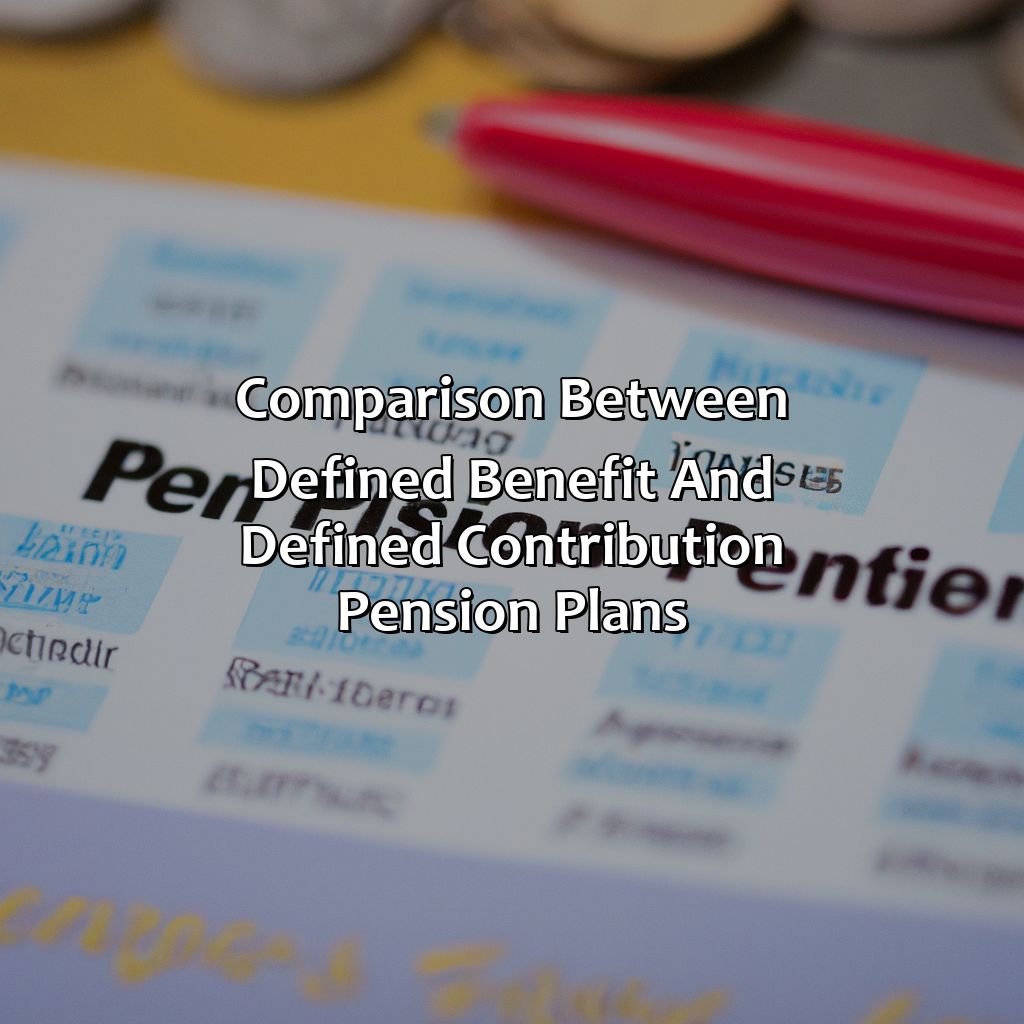
Image credits: retiregenz.com by David Arnold
Risk exposure
When it comes to pension plans, the amount of risk exposure can vary greatly depending on the type of plan. The risk exposure of a pension plan refers to the degree to which a plan’s investments are subject to market risks and other uncertainties.
In general, defined benefit plans tend to have higher levels of risk exposure than defined contribution plans. This is because defined benefit plans promise a specific level of retirement income regardless of investment performance, while defined contribution plans provide payouts based on the value of the individual’s contributions and any earnings or losses from investment performance.
In a defined benefit plan, the employer typically bears the majority of the investment risk, since they are responsible for providing retirees with a specific level of income. If investment returns fall short of expectations, employers may need to contribute additional funds in order to meet their obligations. Defined contribution plans, on the other hand, place more investment risk on employees. Since payouts depend on account balances and investment performance, individuals who invest poorly or experience poor market conditions may receive lower payouts.
It’s important to note that there are many different types of pension plans beyond traditional defined benefit and defined contribution plans. For example, cash balance pensions combine features of both types by promising employees a set level of income upon retirement while also basing benefits on an employee’s accumulated account balance. To know more about how many pension plans are there in the US, one can explore various options.
Considering the varying degrees of risk exposure among different types of pension plans is crucial when choosing which plan to enroll in or when managing investments within an existing plan. Otherwise, individuals may miss out on potential returns or face unexpected reductions in retirement income due to market fluctuations.
Funding responsibilities: Where your employer becomes your retirement sugar daddy, or you take care of your own damn future.
Funding responsibilities
Pension Plan Funding: Understanding Your Contributions
Whether you opt for a defined benefit or defined contribution pension plan, understanding your funding responsibilities is crucial. With a defined benefit plan, your employer shoulders the responsibility of funding your retirement fund, and the benefits you receive are based on years of service and salary. On the other hand, with a defined contribution plan, you take on the bulk of the contributions that go towards your pension. To know more about how a pension fund works, click here.
It is essential to note that these plans have different eligibility criteria, meaning not every employee can enroll in each type of scheme. Also, some employers may offer both schemes simultaneously to provide flexibility for their employees.
Being aware of your contributions’ role in funding pension schemes is vital as it determines how much retirement savings you will have available when it’s time to retire. Take ownership of your contributions by making sure you invest enough funds into the scheme regularly.
If you are curious about who manages pension funds and want to learn more about the different types of plans available, there are many resources available online to help you. It is important to do your research and speak to a qualified financial advisor before making any decisions about your retirement savings.
Don’t let yourself get left behind without sufficient retirement savings when others are enjoying a comfortable life after work! Start investing now in your preferred scheme and secure the future you want.
Retirement income certainty is a myth, just like unicorns and politicians keeping their promises.
Retirement income certainty
The certainty of retirement income is a critical factor when choosing pension plans. It can be defined as the level of assurance that an individual has regarding the amount of money they will receive during their retirement years.
Defined benefit and defined contribution plans offer different levels of retirement income certainty. Defined benefit plans provide guaranteed payments for life, while defined contribution plans depend on investment performance and contributions made by both employees and employers.
One factor affecting retirement income certainty is the risk involved in investment decisions. In a defined contribution plan, investment risk is borne by the employee. On the other hand, a defined benefit plan transfers investment risk to the employer, which increases retirement income certainty for employees.
It’s worth noting that legislative changes and economic factors can affect retirement income certainty. For example, changes to tax laws or interest rates can impact pension fund investments, influencing how much retirees receive in their pensions.
A friend of mine opted for a defined benefit plan from her employer and was relieved about how easy it was to manage her finances during her retirement years. She could depend on receiving predictable payments every month instead of worrying about market fluctuations and investment performance that would affect her savings in a defined contribution plan. If you want to know more about how a pension is paid out, check out this helpful guide.
Whether it’s a 401k or an IRA, one thing’s for sure: the acronym game in the pension world is strong.
Other Types of Pension Plans
Delve into this segment on “Other Types of Pension Plans” to know more about other types of pension and their benefits in retirement. It has subsections on Cash Balance Pension Plan, Government Pension Plans, and Hybrid Pension Plans. Uncover the unique pros and cons of each!
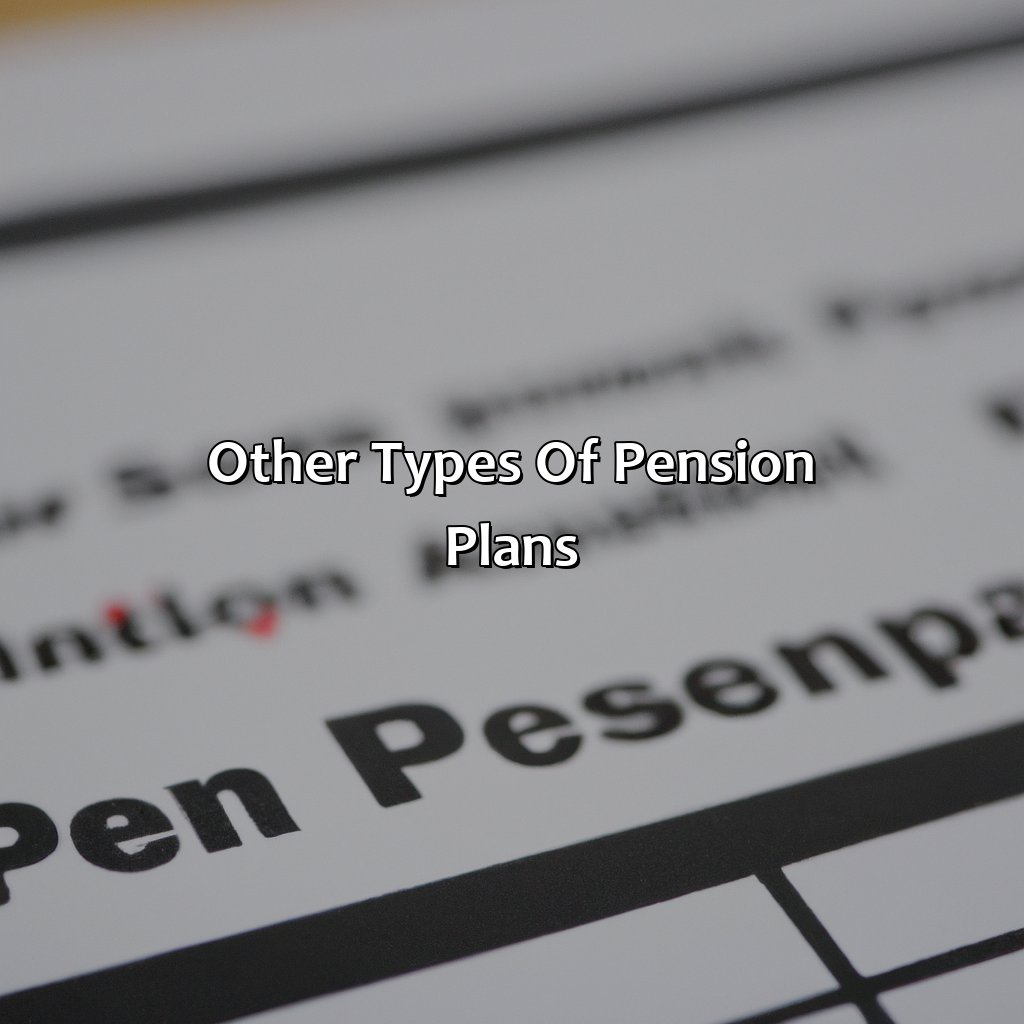
Image credits: retiregenz.com by Yuval Woodhock
Cash Balance Pension Plan
A pension plan that defines a fixed conversion rate and credits annual benefit based on the employee’s account balance is known as a Hybrid Pension Plan. It assigns an equivalent percentage of the employee’s salary to be paid annually throughout his retirement.
This pension type combines the features of both defined benefit and defined contribution plans. Employers credit the account with a certain sum annually, where each accrual earns interest according to a pre-determined formula. In this type of plan, every year, both employer contributions (credits) and interest earnings are added to the participant’s pension account.
When it comes to taxation, these plans are quite similar to defined contribution plans since they only tax withdrawals taken from contributions made using after-tax dollars. The earnings (interest) though will be taxed at an ordinary rate as well upon withdrawal.
Hybrid Pension Plans eliminate longevity risk by assuring benefits funded until death while also mitigating financial obligations for employers- who can predict their costs in concrete terms. They can customize contribution levels and structure cash flow based on financial conditions.
Employees looking for retirement certainty desire greater guarantees, courtesy of defined benefit plans, while those seeking higher returns may prefer taking risk with traditional stock market investments. Hybrid Pension Plans’ innovative convergence between saving for retirement through more conservative means with still earning competitive long-term returns evoke increased demand – advantageous for businesses aiming to attract delighted talent without compromising ROI sufficiency over time.
Why rely on a government pension plan when you can rely on the same people who couldn’t fix the potholes in your street?
Government Pension Plans
Institutional Retirement Plans provided by Governments are designed to provide financial aid to retired citizens. These Plans are categorized into different types like Social Security, Public Pension Trusts, Military Pensions and more.
Social Security is the most common Government Pension Plan in many countries. Public Pension Trusts act as an additional source of income for retirees and can be either funded or non-funded. They are generally managed by the State’s own trust fund or a third-party investment firm. Military Pensions, on the other hand, provide retirement benefits specifically to former military personnel.
Unlike traditional pension plans which usually look after only the employee’s retirement needs, Government Pension Plans address multiple aspects of post-retirement life such as healthcare expenses and disability benefits.
It is essential to evaluate each type of Pension Plan offered by your government and opt for the one that fits your needs and requirements perfectly. Seek advice from experienced financial advisors while weighing all options available before choosing one for yourself.
Why settle for just one type of pension plan when you can have the love child of two different plans with a hybrid pension?
Hybrid Pension Plans
Hybrid pension plans are an amalgam of defined benefit and defined contribution plans. The combination of these two gives rise to a third type of plan capable of satisfying the needs of both employer and employee. In this plan, employers typically provide a minimum threshold of guaranteed retirement savings while simultaneously giving the employees the option to assume additional risk by contributing into their separate account.
This type of pension plan is different from traditional defined benefit or defined contribution plans because it provides high-level customization capabilities, allowing employers and employees to tailor their pension investments according to their needs. Some hybrid plans even offer Roth 401(k) options that permit after-tax contributions into a special kind of retirement savings account, which grows tax-free just like a traditional 401(k).
One suggestion for companies is to research all available hybrid pension options and choose one that best fits their organization’s particular characteristics. It’s crucial that businesses evaluate claims made by different providers since there are considerable disparities among products offered in terms of costs, benefits, fees, flexibility, and investment strategies.
Another suggestion is for organizations to clearly communicate with employees about different types of pension options available within their company in simple language with no vague language or industry jargon. This makes it easy for workers to appreciate what they’re getting into and how they’ll benefit over time as well as how much they’re expected to contribute in terms of meeting goals around income replacement at retirement age.
Five Facts About Different Types of Pension Plans:
- ✅ The most common types of pension plans are defined benefit and defined contribution plans. (Source: Investopedia)
- ✅ In a defined benefit plan, employers are responsible for providing a specific retirement benefit to their employees. (Source: Forbes)
- ✅ In a defined contribution plan, employees contribute a portion of their income into an individual account, and the retirement benefit is based on their contributions and investment returns. (Source: U.S. Department of Labor)
- ✅ Other types of pension plans include cash balance plans, which blend features of defined benefit and defined contribution plans, and hybrid plans, which combine two or more types of plans. (Source: IRS)
- ✅ It is important to understand the different types of pension plans and their features to make informed decisions about retirement savings. (Source: AARP)
FAQs about What Are The Different Types Of Pension Plans?
What are the different types of pension plans?
There are several types of pension plans, including defined benefit plans, defined contribution plans, cash balance plans, target benefit plans, individual retirement accounts (IRAs), and annuities. Each plan has different features and benefits.
What is a defined benefit pension plan?
A defined benefit pension plan is a traditional pension plan that guarantees a specific retirement benefit based on a formula that takes into account a worker’s salary, years of service, and other factors. The employer bears the investment risk and is responsible for funding the plan.
What is a defined contribution plan?
A defined contribution plan is a retirement savings plan in which the employer and employee make contributions to a retirement account, with the employee bearing the investment risk. The most common types of defined contribution plans are 401(k)s and 403(b)s.
What is a cash balance plan?
A cash balance plan is a hybrid of a defined benefit and defined contribution plan. It guarantees a retirement benefit based on a formula, but the benefit is expressed in the form of an account balance, like a 401(k). The employer bears the investment risk and is responsible for funding the plan.
What is a target benefit plan?
A target benefit plan is a type of defined contribution plan in which the employer sets a retirement benefit target for the employee and contributes to the retirement account to help the employee achieve that target. The employee bears the investment risk.
What is an annuity?
An annuity is a retirement income product that provides regular payments to the retiree for life or a specified period. An annuity can be purchased using funds from a pension plan, IRA, or other retirement account.
